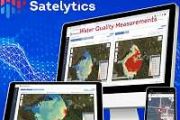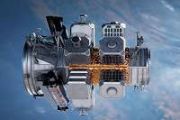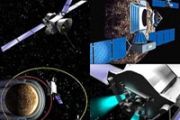
Copernical Team
Sights and sounds of a Venus flyby

ESA’s Solar Orbiter and BepiColombo spacecraft made a historic Venus flyby earlier this week, passing by the planet within 33 hours of each other and capturing unique imagery and data during the encounter.
Week in images: 09 - 13 August 2021

Week in images: 09 - 13 August 2021
Discover our week through the lens
Heat transfer experiment arrives at International Space Station

People who design spacecraft must prioritize two factors: reducing weight and managing extreme temperatures.
A new experiment designed by Purdue University engineers addresses both problems. The Flow Boiling and Condensation Experiment (FBCE), which arrived at the International Space Station on Thursday (Aug.
Army successfully tests high-energy laser weapon
 The U.S. Army says it's developed a combat-capable prototype of a high-energy laser weapon.
The laser, which has been 24 months in the making, can be mounted on a Stryker military vehicle and used to defend troops against drones as well as rockets, artillery and mortars, according to an Army press release this week.
Over the summer, the new weapon was successfully tested in Fort
The U.S. Army says it's developed a combat-capable prototype of a high-energy laser weapon.
The laser, which has been 24 months in the making, can be mounted on a Stryker military vehicle and used to defend troops against drones as well as rockets, artillery and mortars, according to an Army press release this week.
Over the summer, the new weapon was successfully tested in Fort Size of supermassive black hole divulged by eating pattern
 Astronomers have finally linked the size of a supermassive black hole to the spectral patterns generated by its eating habits.
Most nearby supermassive black holes are dormant. These long-sated, sleeping giants ate up their supply of gas and dust many millions of years ago, leaving them dark and quiet.
To identify dormant black holes, scientists must measure their gravitational i
Astronomers have finally linked the size of a supermassive black hole to the spectral patterns generated by its eating habits.
Most nearby supermassive black holes are dormant. These long-sated, sleeping giants ate up their supply of gas and dust many millions of years ago, leaving them dark and quiet.
To identify dormant black holes, scientists must measure their gravitational i NASA mulls how to dispose of International Space Station
 A plan to use a Russian spacecraft to deorbit the International Space Station as early as 2028 remains in question because the United States does not know Russia's intentions for using the orbiting laboratory, NASA and other parties involved in the decision say.
A NASA safety panel approved a plan in 2019 that relies on Russia to modify and launch a Progress spacecraft to guide the stru
A plan to use a Russian spacecraft to deorbit the International Space Station as early as 2028 remains in question because the United States does not know Russia's intentions for using the orbiting laboratory, NASA and other parties involved in the decision say.
A NASA safety panel approved a plan in 2019 that relies on Russia to modify and launch a Progress spacecraft to guide the stru Boeing Starliner launch faces further delays
 Boeing's troubled Starliner spaceship could be set for further delays after the company said Thursday it was working to solve problems with the propulsion system.
The spaceship's latest launch date on August 4 was cancelled over propulsion issues, and it remains unclear when the next test flight will be scheduled.
"Over the past couple of days, our team has taken the necessary time to sa
Boeing's troubled Starliner spaceship could be set for further delays after the company said Thursday it was working to solve problems with the propulsion system.
The spaceship's latest launch date on August 4 was cancelled over propulsion issues, and it remains unclear when the next test flight will be scheduled.
"Over the past couple of days, our team has taken the necessary time to sa During close pass, Solar Orbiter captures Venus' glare

On Aug. 9, 2021, ESA/NASA's Solar Orbiter spacecraft passed within 4,967 miles (7,995 kilometers) of the surface of planet Venus. In the days leading up to the approach, the Solar Orbiter Heliospheric Imager, or SoloHI, telescope captured this gleaming view of the planet.
The images show Venus approaching from the left while the Sun is off camera to the upper right. The planet's nightside, the part hidden from the Sun, appears as a dark semicircle surrounded by a bright crescent of light – glare from Venus' incredibly bright sunlit side.
"Ideally, we would have been able to resolve some features on the nightside of the planet, but there was just too much signal from the dayside." said Phillip Hess, astrophysicist at the Naval Research Laboratory in Washington, D.C. "Only a sliver of the dayside appears in the images, but it reflects enough sunlight to cause the bright crescent and the diffracted rays that seem to come from the surface."
Two bright stars are also visible in the background early in the sequence, before being eclipsed by the planet.
Analysis can predict individual differences in cardiovascular responses to altered gravity

With recent forays into space travel by business moguls like Jeff Bezos and Richard Branson, visiting the edge of space has never been more within the grasp of commercial travel. However, at these altitudes, passengers experience weightlessness, or more generally, altered gravity, that can affect the body's normal physiology.
In a study, Texas A&M University researchers have used a simulation-based approach to accurately predict the effects of altered gravity on an individual-by-individual basis. Their approach precludes the need for simultaneously testing hundreds of parameters for estimating the cardiovascular state of an individual; rather, it focuses on a handful of significant factors, increasing accuracy and saving time.
"Understanding human physiological responses in altered gravity environments becomes absolutely necessary if we want to push toward new frontiers in space travel," said Dr. Ana Diaz-Artiles, assistant professor in the Department of Aerospace Engineering. "But no two people are alike, and we need to develop tools to individualize physiological predictions quickly and precisely. Our study addresses that gap."
The researchers have reported the results of their study in The Journal of Applied Physiology.
NASA facility in Ohio named for native son Neil Armstrong

A NASA research facility in Ohio has been renamed after astronaut Neil Armstrong, who was born in the state and returned shortly after he became the first man to walk on the moon.
Ohio's U.S. senators led the efforts to change the name of the NASA Plum Brook Station in Sandusky to the Neil A. Armstrong Test Facility.
Republican Rob Portman said he raised the idea with Armstrong in 2012, shortly before Armstrong's death, but he wasn't comfortable with the attention it would bring.
"It was never about him. It was about the mission," Portman said Wednesday at a ceremony marking the name change.
NASA and Armstrong's family supported renaming the research center, Portman said.
Armstrong's son, Mark Armstrong, said the early space missions showed people across the world that they could do things they could never imagine.
"That is more empowering than any scientific advancement," he said. "It's more empowering than the transistor. It's more empowering than the computer. Because it's unlimited. And that's what we have to remind people."
Armstrong was born just outside Wapakoneta in 1930, took flying lessons at a nearby airstrip and made his first solo flight at age 16.































